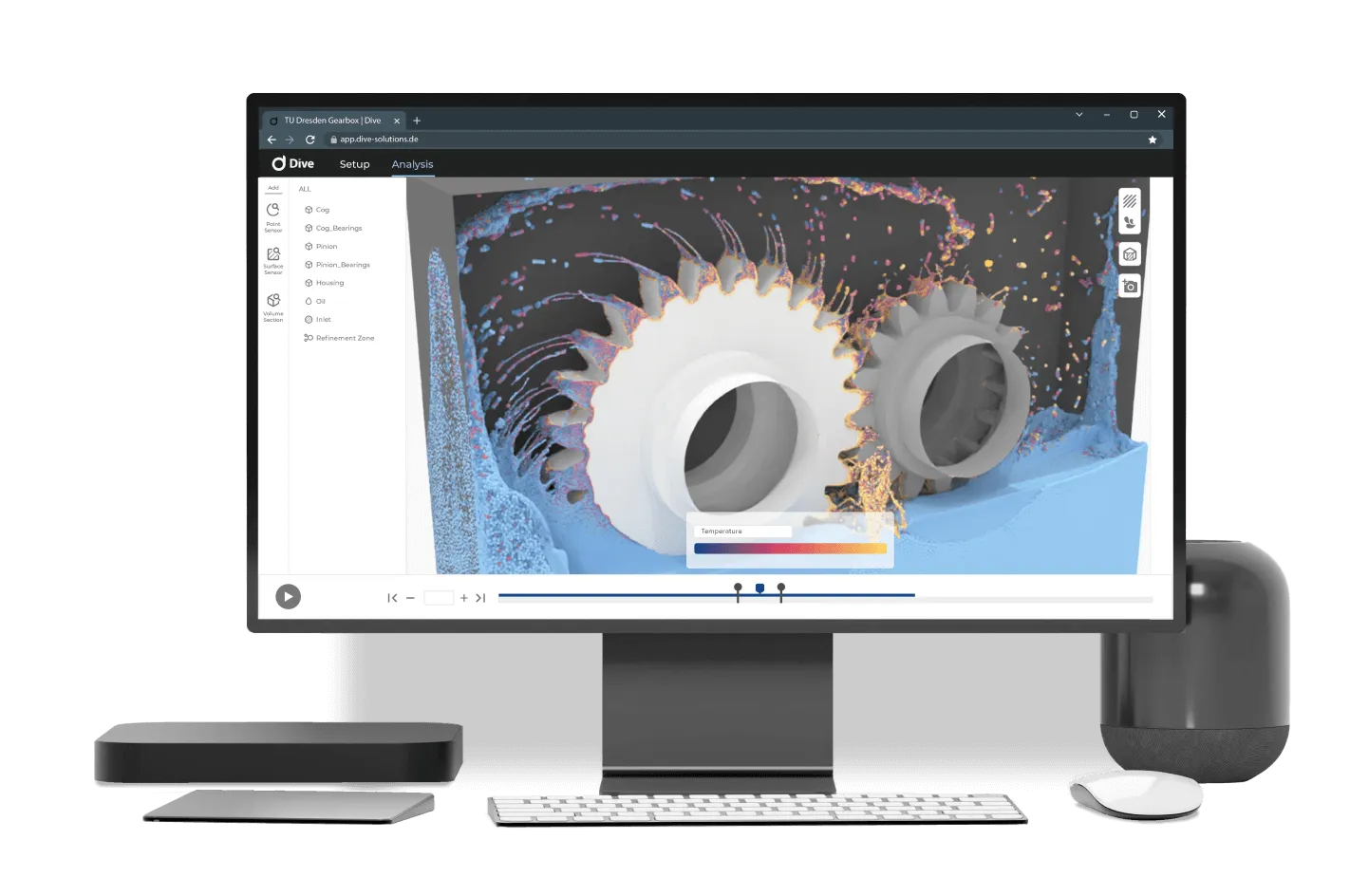Improve power density by optimizing coolant flow, insulation, and thermal management
Produce highly efficient motors that weigh less and require less installation space
Scale your manufacturing process with fast simulations in the cloud
Better motor performance and longevity
Produce long-lasting motors by preventing foreseen damage
Comply with new motor regulations and standards (EU’s eco-design legislation from 1 July 2023)
For manufacturers in 2023, raising electric motor efficiency is critical. The global energy performance standards are raised. In the EU, new regulations come into force on 1 July, 2023 that set requirements for certain electric motors. Around 8 billion electric motors are currently used in the EU, consuming almost half of the electricity that Europe produces. Their prominence means that manufacturers can make significant energy savings by ensuring their electric motors reach the new standards. By simply using more efficient motors, the EU can save as much energy as an entire country uses each year. How do global electronics manufacturers ensure that hundreds of product lines with electric motors conform to the new standards?
As with many commercial challenges, the solution for rapidly transitioning to highly efficient electric motors lies in design. One of the major challenges manufacturers are facing today is creating and scaling new motors. Off-the-shelf electric motors won’t suffice for manufacturers. These electric motors are bulky, loud, and require a lot of raw materials to produce. Furthermore, they are costly and complicated to manufacture and dispose of. Continued reliance on outdated technology is the primary reason electric motor systems account for over 50% of global energy consumption. To lower it and meet the high market demands, manufacturers need new scalable design models.
With our cloud-native computational fluid dynamics (CFD) software, our customers are front-loading design decisions, gaining new insights into their products, and optimizing their motor designs for better efficiency and performance. Thanks to mesh-free simulation (SPH) and our SaaS business model, engineers are able to simulate what they couldn’t before, at scale. Our customers gain hidden insights into their products, like seeing a realistic visualization of the coolant flow and temperature distribution. They can identify possible hotspots and make better design decisions faster. The market demands a new approach to designing electric motors. Stay competitive with CFD software that enables you to design and scale your efficient electric motor production.

Customer Story:
A leading German enterprise needed to improve its motor efficiency and performance. They also wanted to improve the manufacturing process by reducing costly and time-consuming testing, improving motor efficiency with better insulation, and making the impregnation process cleaner and more efficient.
The challenge was the 30K temperature difference between the inlet and surface temperature. The cooling performance was evaluated by calculating the heat transfer of coolant flowing across the coil and component surfaces. They started a workflow in the Dive CFD software to define the geometry from their CAD files.
First, they set the fluid properties, inlet velocities, and boundary conditions (like the surface temperatures). Then the simulation could start. As a result, they got a flow prediction with detailed insights into the local wetting, temperature distribution, and flow velocities.


Finally, they could asses the cooling effect on each coil, in terms of the heat transfer rate. Using this workflow for various inlet designs and flow rates allows the engineers to identify the optimal design for their motor. Because Dive runs fully in the cloud, all the tests can be computed simultaneously, with results ready in a few hours.
The design engineers found that by using direct liquid cooling (DLC) instead of e.g. water-jacket cooling, the company could design motors with less installation space, higher torques, and power densities. In less time than with other CAE tools, the engine manufacturer was able to not only optimize its motor’s cooling system but also improve its overall efficiency and sustainability. The overall turn-around time was reduced, thanks to powerful simulations and a highly accurate SPH model.

Set up faster with mesh-free preprocessing. Our SPH solver enables significantly faster simulation setups. Feel safe with validated and established physical models that solves even the most complex fluid flows in your electric motor.
By testing more and iterating faster in the browser-based interface, you can produce more efficient and sustainable motors. Minimize the risk of product failure and avoid costly product maintenance.
Speed up time-to-market and reduce physical testing. Avoid unplanned design iterations and extensive experimental troubleshooting. Simulation-driven design helps you make faster and better decisions early in the product development cycle. Scale your product lines with confidence.

Surface tension without artificial tuning parameters to calculate effects like capillary effects in gaps and droplet formation

Complex moving and stationary components to simulate geometrically complex parts including windings

Heat transfer to improve cooling concepts, e.g. modern direct oil cooling concepts
If your engineering team is dealing with liquids and heat management, chances are this is the right software for you.
Use the Dive CFD software, free for a week, including service by a Customer Success Engineer who will ensure successful results for your project. No strings attached. Comfortably evaluate your project before you commit to a subscription.


A Dive representative will contact you, typically within 1 business day. Note: Only registrants with valid use cases will be contacted.